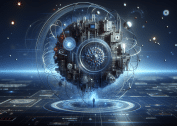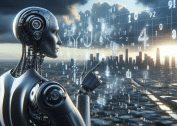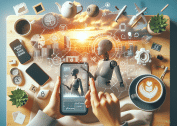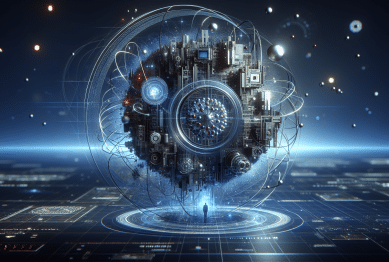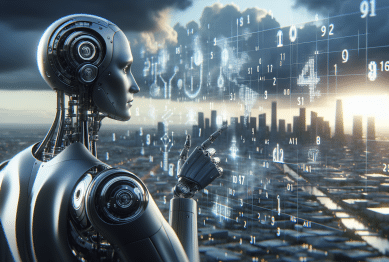Discover how artificial intelligence is woven into everyday routines in ways that often go unnoticed. This guide explores where and how AI influences shopping, healthcare, transportation, entertainment, education, and ethical decisions—all powered by smart algorithms and rapid technological innovation.
AI in Your Shopping Experience
Many people see artificial intelligence as futuristic, but its presence in everyday shopping is widespread. Online stores rely on AI-based recommendation engines to suggest products you might love. When browsing items, those ‘just for you’ sections are usually curated by sophisticated smart algorithms that analyze your browsing and purchasing patterns. These systems combine thousands of signals—search terms, purchase history, and even the pixels you hover over—to refine their suggestions. As a result, shopping becomes more personalized, which can save time and even help buyers discover useful products they might have missed otherwise.
AI-driven chatbots are another innovation that has reshaped online retail. These virtual assistants streamline customer support, answer questions, resolve complaints, and offer guidance 24/7. They understand requests through natural language processing, providing a seamless interface for users to get help quickly. This constant, AI-powered customer engagement has become a core expectation for many shoppers, particularly as more transactions shift online. Behind the scenes, these tools also collect data to help companies improve their service and customize future interactions.
Beyond suggestions and chatbots, artificial intelligence also powers supply chain efficiency. AI manages warehouse operations, forecasts demand, and even detects fraudulent transactions. Retailers optimize inventory levels and shipping routes thanks to predictive analytics, which means orders arrive quicker and more reliably. These invisible processes save costs and contribute to smoother transactions, benefiting both businesses and consumers. Shopping online or in-store continues to evolve rapidly—with AI driving the transformation under the hood.
AI Safety and Health Innovations You Benefit From
Artificial intelligence plays a growing role in modern healthcare, offering advanced decision support to clinicians and patients. Tools powered by AI analyze medical images, flagging early signs of conditions that might be invisible to the human eye. For instance, deep learning models scan x-rays, CT scans, and MRIs to spot tumors, fractures, or other abnormalities. These algorithms aren’t a replacement for doctors, but they do act as valuable second opinions, helping medical teams make faster, more accurate diagnoses (Source: https://www.fda.gov/medical-devices/software-medical-device-samd/artificial-intelligence-and-machine-learning-software-medical-device).
Wearable devices also use AI to track activity, monitor heart rate, and warn users about potential health events before they escalate. These smartwatches and fitness bands learn your baseline data over time, alerting you to significant changes that may require a doctor’s attention. This continuous, personalized monitoring empowers people to take greater control over their well-being. Insights collected by these devices support broader health trends when shared anonymously, contributing to public health initiatives and studies in a secure, privacy-conscious manner.
AI-driven drug development accelerates the discovery and testing process for new treatments. Algorithms sift through millions of compounds, predicting which ones may be effective and safe for further study. This speeds up what was traditionally a slow process, potentially bringing beneficial drugs to market sooner. In hospitals, AI also helps optimize scheduling, reduce paperwork, and improve resource allocation—factors that make patient care smoother and more effective in an increasingly data-rich world.
Smart Mobility: How AI Shapes Transportation
Transportation has seen a revolution driven by artificial intelligence, turning vehicles and infrastructure into ‘smart’ systems. Many new cars today include advanced driver-assistance systems that rely on AI to help with tasks like lane-keeping, adaptive cruise control, and automatic emergency braking. Sensors feed real-time data into onboard computers, allowing them to react to road conditions or obstacles instantly, enhancing driver and passenger safety. AI is at the heart of these self-monitoring safety features, which have become increasingly common across a broad range of vehicles.
Public transportation and delivery services also benefit from AI. In metro cities, AI-powered algorithms help manage train and bus schedules, optimize routes, and reduce congestion. For logistics providers, predictive analytics determine the most efficient delivery pathways, taking into account traffic, weather, and customer preferences. This leads to faster delivery times and reduced emissions, supporting sustainability goals (Source: https://www.transportation.gov/policy/initiatives/automated-vehicles).
The dream of self-driving vehicles is only possible through the continuous learning of AI systems. Autonomous cars and trucks use extensive data from their surroundings to navigate complex urban environments and highways. While full, universal self-driving is still being refined, pilot programs have shown how AI can safely manage navigation and hazard detection. Looking ahead, connected infrastructure such as smart traffic lights and adaptive signage will increasingly depend on AI to coordinate activity, making roads safer and more efficient for everyone.
Personalized Entertainment Powered by AI
Music, movies, and social media have all experienced dramatic change thanks to AI-driven personalization. Streaming platforms analyze users’ past behavior, listening habits, and even time of day to recommend playlists or shows tailored to individual tastes. These AI recommendation engines ensure that the next song or movie is likely to resonate, keeping users engaged for longer. Behind every click or swipe is a host of machine learning models that adapt to changing preferences and cultural trends, keeping content fresh and appealing (Source: https://hbr.org/2022/12/how-streaming-media-companies-use-ai).
Gaming, too, has embraced artificial intelligence in subtle but important ways. Many games now feature adaptive AI opponents that learn from player behavior, adjusting difficulty and strategies to keep gameplay challenging. Game worlds feel more dynamic and immersive thanks to procedurally generated environments and realistic non-playable characters driven by AI decision-making. As a result, each session can feel unique, offering ongoing excitement for casual users and enthusiasts alike.
Content moderation is another aspect of entertainment where AI shines. Social platforms utilize machine learning models to detect inappropriate material, filter misinformation, and flag potential violations of community guidelines. While human review still plays a role, these systems can process millions of posts or messages within seconds. This helps create safer online environments and ensures compliance with legal requirements, supporting both platform integrity and user trust.
AI’s Role in Modern Education
Education has seen a boom in digital adoption, and artificial intelligence powers much of this transformation. Online learning platforms deploy AI tutors, virtual classrooms, and grading systems to deliver personalized instruction at scale. These systems assess the progress of each learner and adapt content to match their strengths, weaknesses, and pace. Students can receive additional support where needed and accelerate through sections they’ve already mastered, breaking the traditional ‘one size fits all’ approach.
AI-powered plagiarism detection and language tools ensure academic honesty and accessibility. Algorithms can identify copying across a vast array of sources instantly, supporting educators in upholding standards. Language translation and accessibility features—like automated captions and text-to-speech—use AI to remove barriers for students with different learning preferences or needs. As a result, inclusive education becomes more attainable, with technology bridging gaps that once limited participation (Source: https://ed.stanford.edu/news/how-artificial-intelligence-changing-way-we-learn).
Smart content recommendations help keep learners engaged. By studying user interactions and quiz results, these platforms adjust material to maintain motivation and interest. Teachers also gain richer insights from AI-derived analytics, tracking progress, identifying risks, and tailoring interventions. The overall effect is a learning environment that is more responsive, equitable, and adaptable—fueled by advances in intelligent technology.
Ethical Challenges in Artificial Intelligence
Alongside all the advances, AI presents deep ethical questions around bias and transparency. Machine learning algorithms can inadvertently reinforce stereotypes if trained on incomplete or prejudiced data. This can lead to unfair outcomes in areas such as recruitment, lending, or law enforcement decisions. Recognizing these risks, technologists and regulators are working together to audit AI models, ensuring that automated decisions are as free from bias as possible and that there is a clear trail of accountability (Source: https://www.edf.org/technology/artificial-intelligence-ethics).
Privacy is another growing concern. As AI collects and processes more personal data, individuals and organizations must consider how information is stored, shared, and protected. Stronger data governance rules and transparent usage policies are being developed globally to address these challenges. Consumers are increasingly aware of the need to keep personal information secure, driving changes in both regulation and industry practices (Source: https://www.brookings.edu/articles/how-ai-is-transforming-data-privacy/).
The debate about job automation also heats up as AI systems become more advanced. While AI boosts efficiency in many processes, it can restructure job roles, leading to concerns about workforce displacement. Many experts urge leaders to invest in re-skilling and up-skilling programs, preparing societies for new kinds of work emerging in an AI-driven world. This transition highlights the need for thoughtful policy and collaborative planning to ensure innovative technology brings broad and sustainable benefits.
References
1. U.S. Food and Drug Administration. (n.d.). Artificial Intelligence and Machine Learning in Software as a Medical Device. Retrieved from https://www.fda.gov/medical-devices/software-medical-device-samd/artificial-intelligence-and-machine-learning-software-medical-device
2. U.S. Department of Transportation. (n.d.). Automated Vehicles Policy. Retrieved from https://www.transportation.gov/policy/initiatives/automated-vehicles
3. Harvard Business Review. (2022). How Streaming Media Companies Use AI. Retrieved from https://hbr.org/2022/12/how-streaming-media-companies-use-ai
4. Stanford Graduate School of Education. (n.d.). How Artificial Intelligence is Changing the Way We Learn. Retrieved from https://ed.stanford.edu/news/how-artificial-intelligence-changing-way-we-learn
5. Environmental Defense Fund. (n.d.). Artificial Intelligence & Ethics. Retrieved from https://www.edf.org/technology/artificial-intelligence-ethics
6. Brookings Institution. (n.d.). How AI is Transforming Data Privacy. Retrieved from https://www.brookings.edu/articles/how-ai-is-transforming-data-privacy/



